Air cooled evaporator is another important part in the refrigeration system except refrigeration unit. It will transfer the heat from the substance to be cooled to the refrigerant, thus removing the heat from the substance. Air cooled evaporator is widely used for wide variety of diverse applications in refrigeration processes and available in wide variety of shapes, sizes and designs. They are also classified in different manner depending on the feeding refrigerant, construction of the evaporator, direction of air circulation around the evaporator, application and also the refrigerant control.
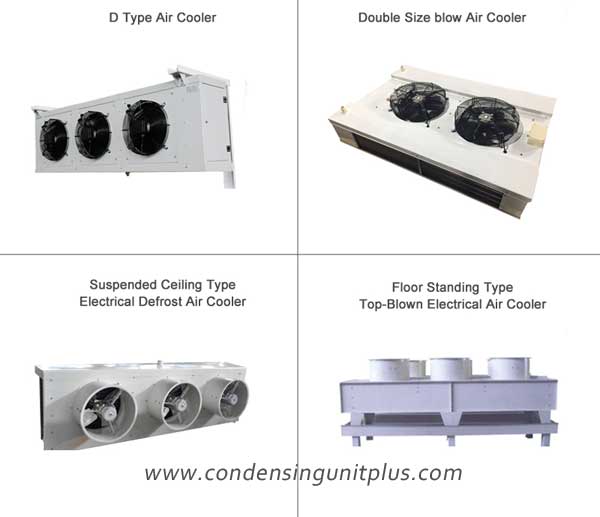
The main function of air cooled evaporator is to absorb heat into the refrigeration system, the evaporator is often placed in the area to be cooled. The refrigerant is let into and measured by a flow control device, and eventually released to the compressor. The air cooled evaporator consists of finned tubes which absorb heat from the air blown through a coil by a fan. Fins and tubes are made of metals with high thermal conductivity to maximize heat transfer. The refrigerant vaporizes from the heat it absorbs heat in the evaporator.
Flow control device such as the expansion valve controls the flow of the liquid refrigerant into the evaporator. Control devices usually are thermostatic, meaning that they are responsive to the refrigerant temperature.
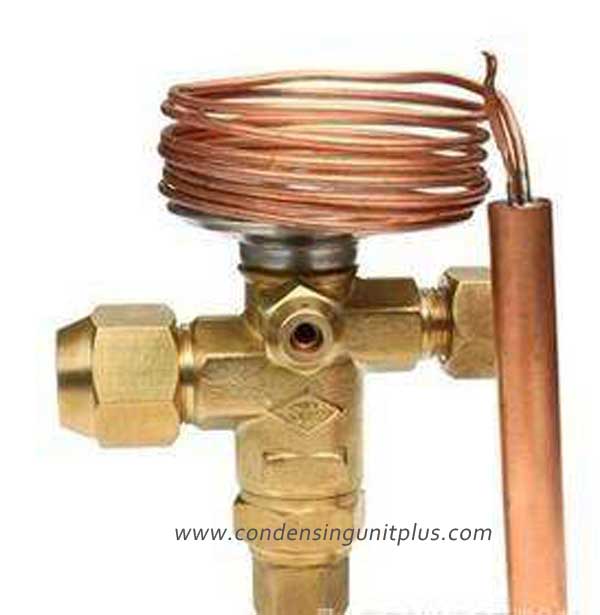
The refrigerant enters the air cooled evaporator at very low pressure and temperature, after passing through the expansion valve. The refrigerant absorbs the heat from the substance that is to be cooled so the refrigerant gets heated while the substance gets cooled. Even after cooling the substance the temperature of the refrigerant leaving the evaporator is less the than the substance. The refrigerant leaves the evaporator in vapor state, mostly superheated and is absorbed by the compressor.
The air cooled evaporator adopts axial flow ventilation technology. When the axial fan is in operation, the power machine drives the impeller of the cooling fan to rotate in the cylindrical casing and the gas enters from the collector. The energy is obtained through the impeller, the pressure and velocity are increased, and then the axial discharge is performed. Axial ventilation fans are available in vertical, horizontal and inclined versions. Small impellers are only about 100 mm in diameter, and large ones can be more than 20 meters in diameter. Axial-flow chillers, large-scale low-pressure axial-flow chillers consist of impellers, casings and current collectors, and are usually installed on the walls or ceilings of buildings; large-scale high-pressure axial fans consist of current collectors, impellers and flow lines. Body, casing, diffuser blades are evenly arranged on the hub, the number is generally 2-24. The more blades, the higher the wind pressure; the blade installation angle is generally 10 ° ~ 45 °, the larger the installation angle, the greater the air volume and wind pressure. The main parts of the axial cooling fan are mostly welded or riveted.
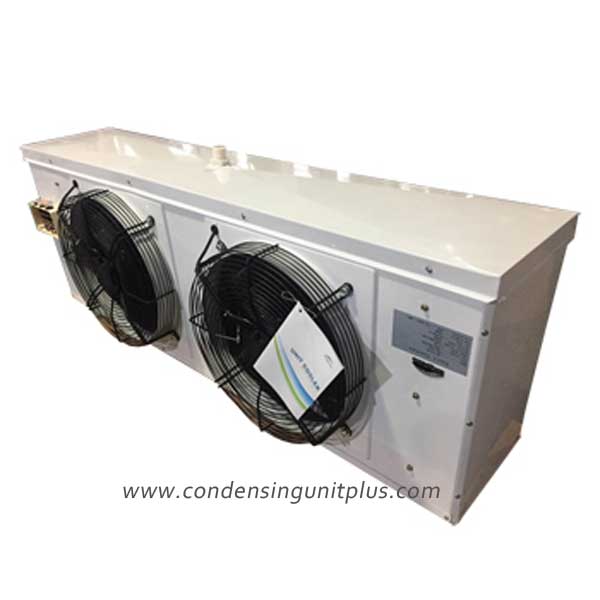
ONLYKEM Air Cooled Evaporator Focus Points
1. Hydrophilic aluminum foil for all fins has anti-corrosion effect
2. Using silver electrode for copper pipe welding. More firmly for welding point, high leak resistance for freon.
3. 2.6Mpa pressure leak test
4. Waterproof protection of axial fans
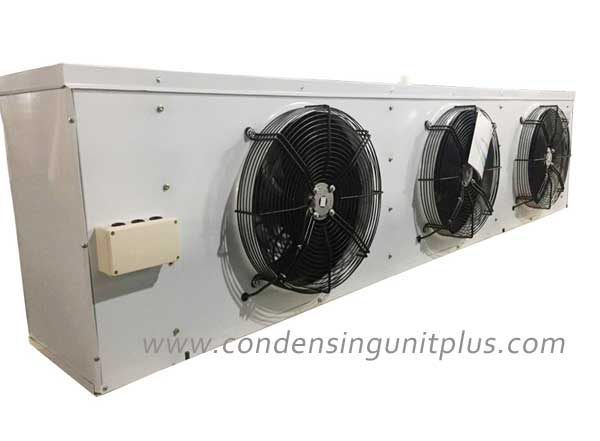
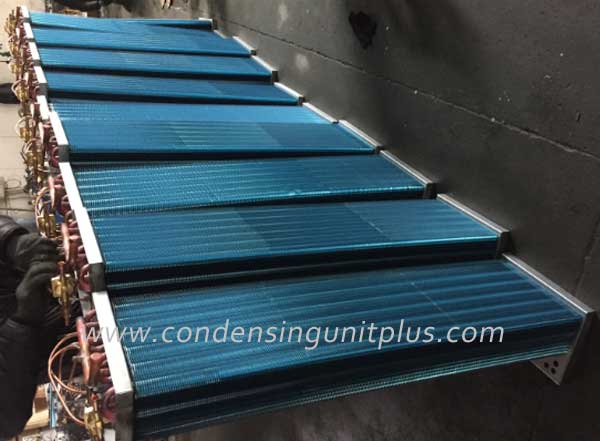
Precautions for air cooled evaporator installation
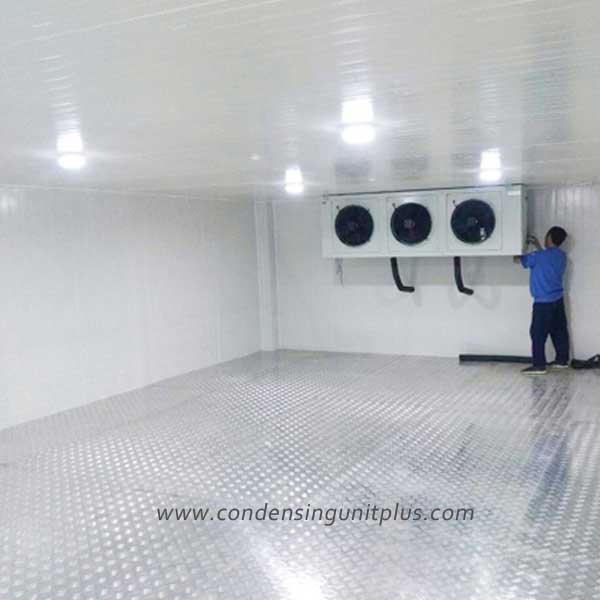
- The distance between the back of the evaporator and the cold storage insulation panels is 300MM at least, which is conducive to the air circulation in the cold storage and to facilitate future maintenance.
- The cold return air inlet of the cold storage room should be provided with the U type oil return bend, so that the refrigerating oil can be conveniently returned to the compressor.
- The outlet pipe of the evaporator must be provided with a U-shaped bend to form a liquid seal to avoid air circulation inside and outside the storeroom.
- – Ambient temperature: 18 C – 45 C ;
– Relative humidity of the environment: less than 85%;
– Atmospheric pressure: 86Kpa-106Kpa;
– Voltage deviation should not exceed 10% of rated voltage
Maintenance processdure
— After a refrigeration system running for a period of time, dust accumulates on the filter screen, which increases the air resistance of the air-conditioner indoor unit and causes the air volume to decrease or be blocked. Therefore, regular cleaning is required.
— After long-term operation, due to the heating of wires ,components and other reasons, joint loosening and falling off ,resulting in bad contact and lack of phase, need to be checked and processed regularly.
— Accidents such as flow switches, high and low voltage switches, safety valves and other protective devices should be replaced in time.
Note:In maintenance of evaporator, must close the power supply, it is better to cut off the power after a period of time, because a long time will produce static electricity, the electricity will not disappear immediately after the power break, so ensure safety after repair.
